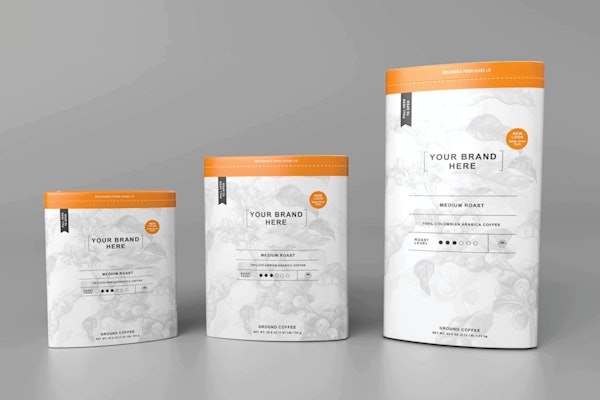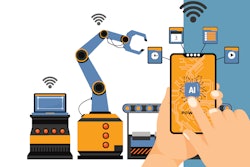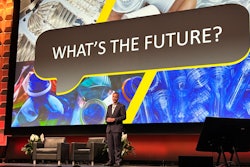
CPG Next’s ChatCPG is a 10 minute (or less) chat with a subject matter expert on all things related to CPGs on the digital transformation journey. In our first session of the series, CPG Next editor Stephanie Neil is joined by Andy Lomasky, senior director of IT at PMMI, to talk about how to use artificial intelligence in manufacturing: Where to start, how to scale, and how to keep the company safe during the process.
What follows is a transcript of the discussion. Or, simply scroll down to watch the video chat!
Neil: We have talked a lot about artificial intelligence in many parts of the organization. But you recently did a presentation at PACK EXPO Las Vegas around how it's used in manufacturing. And I'm just curious, what were the key takeaways you wanted the audience to walk away with?
Lomasky: Well, I think the big thing I really wanted the audience to take away was that artificial intelligence is taking the world by storm, and we have a tendency in manufacturing to be hesitant to try new things. And as a result, sometimes we can lag the technology evolution curve. And the real takeaway is, I think manufacturers should get started somewhere. The goal is to start small, pick a pet project, pick one machine, one line, any one use case that you can think of and get started somewhere. And then learn from the experience and figure out what didn't go well or what you would want to do differently, and use that knowledge to scale and try again and iterate through the process to get it to a place where you can really start generating value from AI.
Neil: When you say start small, what do you mean? Like, maybe just setting up a vision system that has AI embedded in it?
Lomasky: Yeah, absolutely. I mean, there's so many use cases and even in the non-manufacturing world, we talk a lot about different ways you can use generative AI. I mean, you can use it for marketing materials, you can use it to generate detailed instructions for somebody. And when you get to the manufacturing world, the use cases get a lot more specific. So when we talk about starting small, really it's about picking maybe one particular machine that's maybe more suited to being interconnected, or has the ability to have IoT sensors placed on it to start ingesting data.
It's really about picking one small thing and starting there, whether it's with vision systems inspecting the quality of the product. [Or] it could also have to do with tolerances on a machine starting with predictive maintenance and just ingesting data to determine when something goes out of tolerance where you can predict that a machine may be running into trouble and addressing that issue before you end up with downtime.
So it's really about picking any one thing to start with and getting that right and perfecting it and iterating with it and then picking that second thing to move on to. And I know one of your questions that we've talked about in the past is how do you scale, right? You start with one idea, but how do you scale and get bigger?
Well, when you start with one, inevitably, there's more, right? There's more lines. There's more machinery. There's more sensors. There's more data. And so really start with one and then add two and three and four and just keep going with it once you've started to perfect your way of approaching it.
Neil: Once you start scaling though, Andy, isn't there some risk involved in it? How do you make sure you protect your organization, whether it's cybersecurity or making sure that your people are working with AI the correct way?
Lomasky: There's a lot of risk with AI. I'm not going to lie. I mean, it sounds simple, right? Start somewhere, but also you've got to make sure you do it responsibly.
So my recommendations to the audience at PACK EXPO was to start with a policy. Doesn't have to be anything super formal or anything even that robust. A page or two will do it, but write down on paper ways that are acceptable in your company to use AI and ways that perhaps your staff should never use AI.
Like for example, I can tell you in our policy here at PMMI, we say in terms of confidential data, we would never put any sort of personally identifiable information into AI. That's just not something we're going to do. We're not going to put any sensitive information you can use to identify someone. Put that information at risk. But we will put in lots of information about products or publicly available programs, things that are on our website. That's all things that are for public consumption anyway, those are great use cases to put that data in. And so when we talk about the risks, obviously there's risks of data breaches or confidential data getting into the wrong hands. There's also the risk of bias, right? Or, or should we call unintended consequences?
You might recall that Microsoft when they released their first iteration of their Bing chat, one of the responses was sort of in the form of a bratty teenager, which was very much an unintended bias. So what you're going to want to do is look out for those things. And when you write in your policies, you're going to want to state your intentions about how every employee should be monitoring for things like bias or for inaccurate results. And not just taking verbatim whatever AI says as gospel without reviewing it first. So this is the level of governance that I think every organization should take on, even if it's just to start. Write it down on a page or two and then tell everyone, right? Tell your employees and train them and say, here's what you should do and here's what you shouldn't do, how you should use it, things that you absolutely must do, like reviewing the outputs.
And then the last thing you mentioned, Steph, is cybersecurity. That's extremely important, especially if you're talking about putting in machinery data or recipe data or anything that's proprietary, you're going to want to make sure any AI platforms you interact with are protected with a really strong password, have multi-factor authentication if they offer it, uh, or to make sure that if there's any access privileges that you're using that rule of least privilege, right? The least amount of access that someone might need to be able to get their job done without going so far as to give everyone administrative access, right?
Neil: Yeah, and we'll have more discussions about cybersecurity in the future, Andy. I'm sure. Just quickly, though, any predictions do you have for how AI might impact manufacturing in the future?
Lomasky: Absolutely I mean, I, what I said at PACK EXPO is that really we're on generation one of artificial intelligence right now. And if you think about, you know, the maturity curve, we're not even crawling yet with AI before we start crawling and then walking and then eventually running. So there's a lot of room, and headway for improvemen and I think there's a lot of ways that AI can impact manufacturing.
So,three of the biggest things that I think are coming are superior data analytics. You know, being able to use data to not only make informed decisions, but to use that data to take prescriptive action and that's sort of the second thing that was on my list was prescriptive maintenance. So we talk about this concept of predictive maintenance and using data to predict when a machine was failing. Well, what if a machine could not only detect that something was failing, but it could self-heal and use AI to take corrective action to keep that machine or that line running. That's where I think this is heading when we get to generation three and beyond, and we've started to really perfect these models, is to take corrective action and to have AI intervene where it might have taken an engineer or someone working on the line and human judgment to be able to take that action in the past.
The third thing in my mind is really related to maintenance, but in terms of hands-free assistance. So we've talked a little bit in the industry about digital twins and virtual reality type glasses. That's where I think AI can go next is if we're talking about basic troubleshooting or basic maintenance tasks, it's entirely possible that AI can take on the role of walking someone through the necessary steps to work on a machine or to perform a specific task without even needing a human to provide the instructing. So that's where I think all of this will go. But it's probably going to take us a little while to get there.
Watch ChatCPG now!























